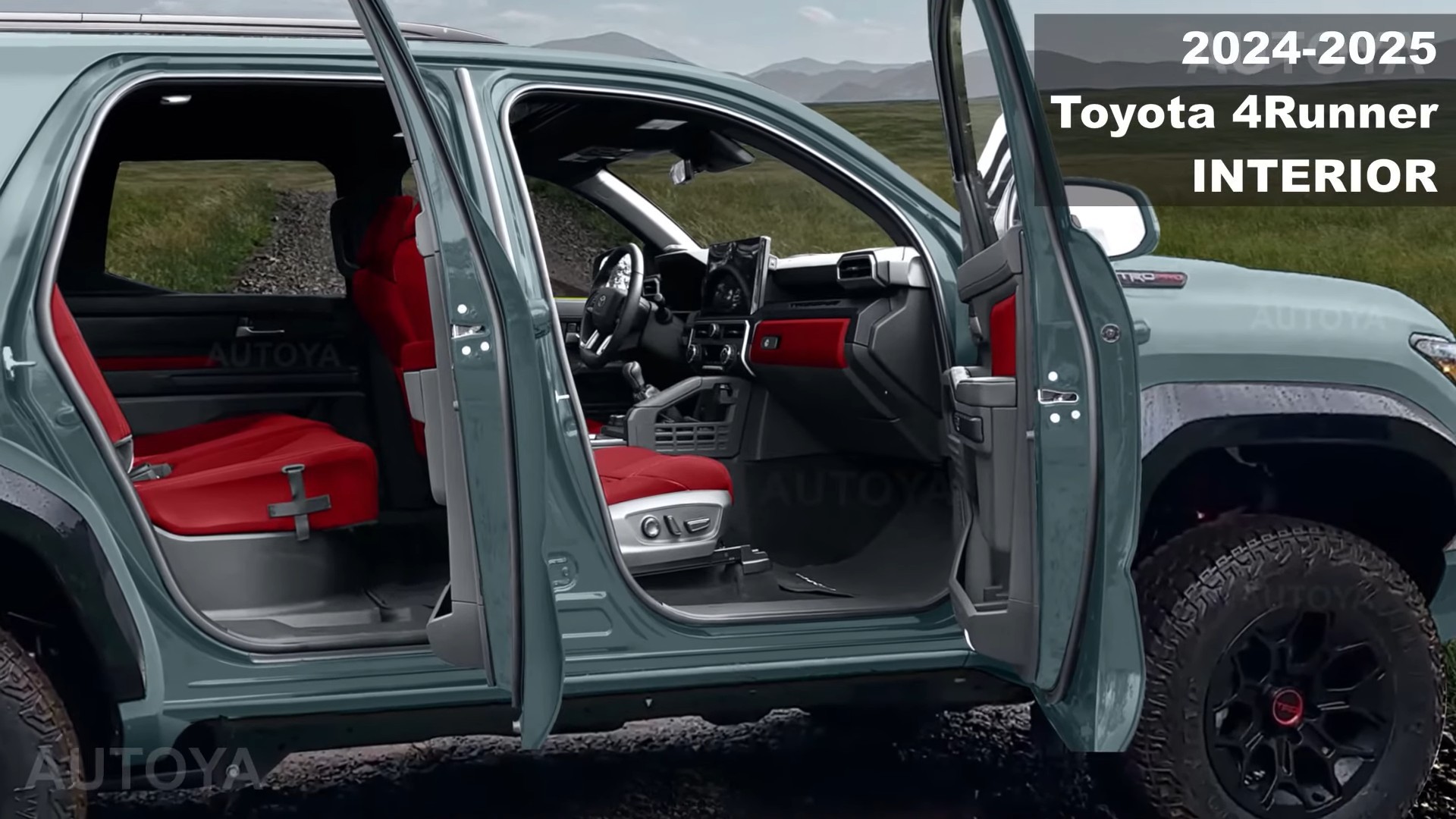The 2025 Toyota 4Runner: A Deeper Dive Into Its Third-Row Seating Potential
The 2025 Toyota 4Runner: A Deeper Dive into its Third-Row Seating Potential
Related Articles: The 2025 Toyota 4Runner: A Deeper Dive into its Third-Row Seating Potential
Introduction
With enthusiasm, let’s navigate through the intriguing topic related to The 2025 Toyota 4Runner: A Deeper Dive into its Third-Row Seating Potential. Let’s weave interesting information and offer fresh perspectives to the readers.
Table of Content
The 2025 Toyota 4Runner: A Deeper Dive into its Third-Row Seating Potential

The Toyota 4Runner, a perennial favorite among off-road enthusiasts and families alike, has long been known for its rugged capability and spacious interior. However, the current generation lacks the coveted third-row seating, a feature that could significantly enhance its versatility. Speculation abounds about the possibility of a third row in the upcoming 2025 model, and while Toyota remains tight-lipped, exploring the potential benefits and challenges of this addition provides valuable insights.
The Appeal of Third-Row Seating:
The addition of a third row would transform the 4Runner into a true 8-seater, offering unprecedented passenger capacity. This would cater to a wider range of buyers, particularly families seeking a vehicle that can accommodate a larger group comfortably. The benefits extend beyond pure passenger capacity:
- Enhanced Family Versatility: A third row would make the 4Runner a perfect choice for families with young children or for those who frequently transport extended families or friends.
- Increased Cargo Space Flexibility: While a third row would inevitably reduce cargo space, the 4Runner’s existing spaciousness suggests ample room for luggage, gear, and other necessities, especially with the third row folded down.
- Market Competitiveness: Many rivals in the mid-size SUV segment offer third-row seating, and the 4Runner’s lack of this feature has been a point of criticism. Adding a third row would level the playing field and attract buyers seeking this functionality.
Challenges and Considerations:
While the potential benefits of a third row are undeniable, several factors must be carefully considered:
- Space Constraints: Adding a third row requires significant modifications to the vehicle’s structure, potentially impacting the 4Runner’s signature off-road capabilities.
- Third-Row Comfort: The third row might be cramped for adults, especially on long journeys. Ensuring adequate legroom, headroom, and overall comfort is crucial.
- Cargo Space Reduction: The addition of a third row inevitably reduces cargo space when deployed. Careful design and engineering are required to minimize this impact and ensure ample cargo capacity for everyday use.
- Weight and Fuel Efficiency: A third row adds weight, which can negatively impact fuel efficiency. Optimizing the design to minimize weight gain is essential.
Exploring the Potential:
Several design and engineering solutions could address the challenges associated with adding a third row:
- Modular Seating System: A flexible seating system that allows the third row to be easily removed or folded flat would maximize cargo space and versatility.
- Optimized Interior Design: Clever interior design and layout could maximize space utilization, ensuring adequate legroom and headroom for third-row passengers.
- Lightweight Materials: Utilizing lightweight materials for the third-row seats and other components could minimize the impact on weight and fuel efficiency.
FAQs:
Q: Will the 2025 4Runner have a third row?
A: Toyota has not officially confirmed the inclusion of a third row in the 2025 4Runner. However, the growing demand for this feature in the mid-size SUV segment suggests that it is a strong possibility.
Q: What will happen to the cargo space with a third row?
A: While a third row will reduce cargo space, the 4Runner’s existing spaciousness suggests that ample room will remain, especially with the third row folded down. The final impact on cargo space will depend on the design and implementation of the third row.
Q: How will the third row affect the 4Runner’s off-road capability?
A: The addition of a third row could potentially impact the 4Runner’s ground clearance and overall off-road performance. However, careful design and engineering could mitigate these effects.
Q: Will the third row be comfortable for adults?
A: The comfort of the third row will depend on the design and implementation. Optimizing legroom, headroom, and overall seating comfort is crucial for ensuring a pleasant experience for adult passengers.
Tips:
- Research thoroughly: Before making a purchase decision, research the 2025 4Runner’s third-row specifications and consider the potential impact on cargo space and off-road capability.
- Test drive: Take a test drive to experience the comfort and functionality of the third row firsthand.
- Consider your needs: Determine if a third row is essential for your specific needs and lifestyle.
Conclusion:
The potential addition of a third row to the 2025 Toyota 4Runner represents a significant development. It could transform the 4Runner into a true 8-seater, offering increased versatility and passenger capacity. However, careful consideration must be given to the challenges associated with implementing this feature, including space constraints, comfort, and impact on off-road capability. If executed thoughtfully, a third row could significantly enhance the 4Runner’s appeal, making it a compelling choice for families and those seeking a spacious and capable SUV. Ultimately, the success of this addition will depend on Toyota’s ability to address the inherent challenges while retaining the 4Runner’s renowned ruggedness and off-road prowess.








Closure
Thus, we hope this article has provided valuable insights into The 2025 Toyota 4Runner: A Deeper Dive into its Third-Row Seating Potential. We thank you for taking the time to read this article. See you in our next article!